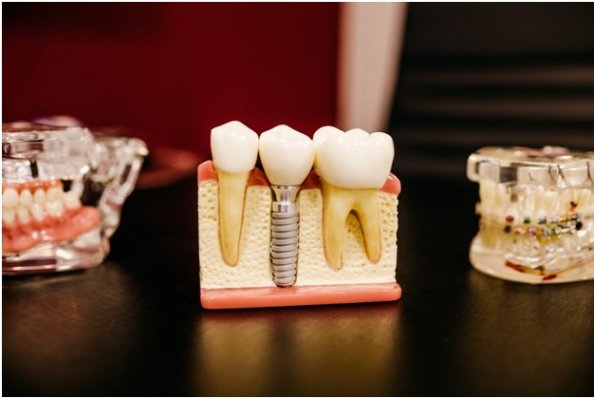Have you ever had severe toothache and been told that the only solution is to get a root canal done? If yes, then you must know everything associated with this dental treatment. But don’t you worry! This article will give you a detailed guide explaining what is involved in getting a root canal and how the process works. We will provide step-by-step information about root canal treatment so you know what to expect during your appointment.

What Is Root Canal Treatment?
Root canal treatment, or endodontic therapy, involves removing the infected or damaged tissue from inside a tooth: the pulp (the soft, innermost layer of the tooth made up of nerves and blood vessels) and any decayed parts the surrounding bone structure.
Root canal treatment is necessary for an infected or inflamed tooth’s pulp due to deep decay, repeated dental procedures on the tooth, cracking or chip in the teeth, or trauma to the face. Aside from the caused pain and discomfort, it darkens tooth colour and can eventually lead to an abscess.
Benefits of a Root Canal Treatment
Root canal treatment is popular for problems related to tooth decay, infection, and injury. It has been a reliable dental care for decades. Here are the benefits of root canal treatment:
Pain Relief
Root canal treatment relieves pain associated with a toothache or other dental issue. It makes it easier to eat, talk, and smile comfortably.
Save Your Natural Tooth
The affected area of your tooth will be cleaned out and filled to protect it from further damage. Instead of needing to extract the tooth entirely, you can keep your natural tooth in place.
Cost-Effective
Root canal treatments are cost-effective because they save time and reduce the treatment needed for a particular issue.
Prevent Further Damage
Root canal treatment cleans out the infected area of the tooth, removing any decay and bacteria and sealing off the root canals. The affected tooth will remain strong and healthy for years to come.
Improve Your Oral Health
A root canal treatment prevents the spread of infection and decay. It helps you maintain good oral health for a longer period.
How is the Root Canal Performed?
Root canal treatment is done by endodontists, general dentists, and even oral surgeons. Endodontists specialise in root canal treatments. General dentists provide routine dental care but may perform root canals. Oral surgeons are skilled in complex surgical procedures like root canal treatments.
1. Preparation and Diagnosis
Your dentist will examine the tooth and surrounding area to determine the extent of damage or infection. Common signs and symptoms that indicate the need for endodontic treatment (root canal) include:
- Severe toothache when chewing or under pressure
- Prolonged sensitivity to hot and cold temperatures
- Discoloration (darkening)
- Swelling and tenderness in gums
- A persistent or recurring pimple on the gum
- Spontaneous pain
- A bad taste or unpleasant odour
- A persisting abscess on the gums
X-rays are taken to get an inside view of the tooth’s structure. When the pulp, which contains nerves and blood vessels, becomes inflamed or infected, you will need root canal treatment. Your dentist will use an anesthetic to make you more comfortable during the procedure.
2. Accessing the Root Canal
Using an endodontic drill, the dentist will create an opening within the crown of the affected tooth to gain access to the pulp chamber and root canals. They will also use files and reamers to further enlarge and shape the canals for cleaning, disinfecting, and filling.
3. Removing the Damaged Pulp
The dentist removes all diseased pulp tissue and any infected dentin (the hard layer of the tooth underneath the enamel) using specialised tools to ensure that no remaining bacteria remains in the root canal system.
4. Cleaning the Canal
A series of special instruments are then used to carefully remove all damaged and infected tissue from within the root canals and any bacteria or debris that may have accumulated.
5. Filling and Sealing
The dentist will fill the space with a biocompatible gutta-percha and seal it with a permanent filling material such as amalgam or composite resin, preventing bacteria from re-entering the root canals and causing further infection.
6. Crown Placement
A dental crown is placed over the treated tooth, protecting it from further infection or damage. The dentist will prepare the area by removing any old filling material or decay and then create an impression of the tooth for a custom-made crown. The crown is then cemented onto the tooth and sealed to prevent further bacteria from entering.
Potential Risks and Complications
Root canal treatment carries potential risks and complications like infection, which can occur if bacteria or other microorganisms are not completely removed from the root canal space. It can cause persistent discomfort or pain, chronic inflammation, and damage to surrounding teeth or structures due to incorrect instrumentation during the procedure. In rare cases, the tooth may become discoloured following root canal treatment or the root canal may fail to heal.

